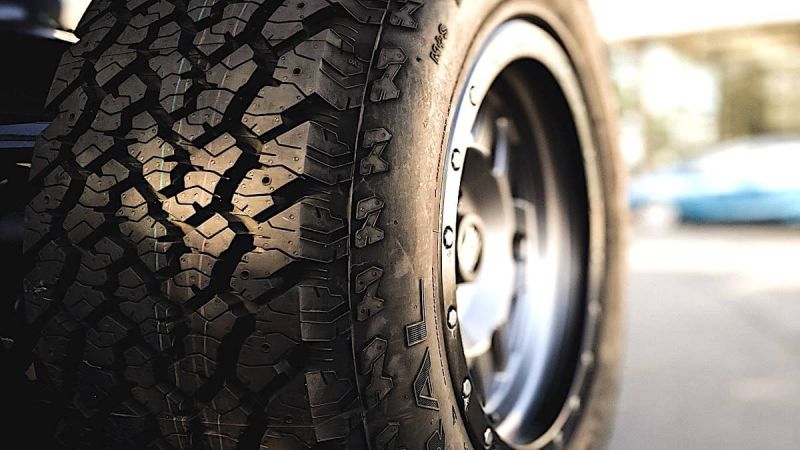What Customers Look For in Tires
Earlier this year we reported on Consumer Reports’ ratings of the best rated high performance car tires of 2021; and more recently with the approach of winter weather, the best SUV and truck tires of 2021 for snow and ice conditions.
According to Consumer Reports analysts, their research shows that the three primary shopping considerations of tire shoppers are that of:
• Brand
• Finding a tire with all-weather grip
• Treadwear warranties
However, in a recent treadwear road test analysis, CR analysts point to the fact that when it comes to treadwear, tire shoppers need to consider that as treadwear increases, so does a tire’s ability to provide optimal grip decrease.
Furthermore, that treadwear warranties also tend to wear thin in unexpected ways when customers discover that prematurely worn tires are not warranty-protected as well as tire sellers would have you believe.
Therefore, after a summer of testing 64 tires for a combined total of over 1 million tire miles, CR analysts recently revealed that buying all-season versus performance all-season tires really may not make that big of a difference in the mileage you get from your tires with respect to the higher prices you pay for performance-rated tires.
The Road Test Analysis
CR road test analysis of tires goes beyond the government’s 7,200-mile treadwear test used to assign a treadwear index under the Uniform Tire Quality Grading System. Which by the way, CR reports that “…the 55-year-old government grading program was created when many tires lasted just 15,000 to 20,000 miles…” and that CR considers their extended tests are better at projecting actual tread life.
This year’s CR’s tests involved 8 Toyota Camrys over a six-month period in which 64 tires were tested for a total of 1,024,000 tire miles. Their test drivers drove in 500-mile shifts at two shifts per day, excluding weekends and holidays. The test tires were measured, rotated, and pressure checked every 1,000 miles, along with the vehicle being treated to an alignment to ensure wear condition factors from each vehicle were as equal as possible.
Road Test Analysis Results
What the test showed was that:
• High-scoring all-season tires last about 55,000 to 85,000 miles.
• Performance all-season tires last between 50,000 and 85,000 miles.
• The two top rated tires from Michelin (the Defender T+H all-season tire and CrossClimate2 all-weather tire in the performance all-season category) projected out to 85,000 miles of tread life in CR’s test.
Caveats to Tire Wear
While the data showed that the high-scoring all-season tires performed as well as the typically higher-priced performance-rated all-season tires---and some other top-rated performance tires as well---CR analysts point out that that having your tires rotated is what it takes to achieve optimum mileage life from your tires. However, this is not practical for all tires when you consider that directional tires limit the optimized rotation patterns. Furthermore, sportscars with differing sized front and rear wheels are limited rotation-wise as well.
In addition, careful monitoring of monthly tire pressure and maintaining a properly aligned front end also significantly contribute to longer tire tread life.
A Word About Warranties
Consumer Reports analysts also point out that warranties do not always offer the best deals for coverage and protection. In fact, in some cases those warranties can cost you more when it comes to replacing a prematurely worn tire. In summary for example:
• Warranty restrictions may include having to show even wear across the tread. You may also have to show receipts that verify you had the tires rotated every 5,000 miles, since they were new.
• In order to qualify as worn out, you may to attain a tread depth of about 2/32 inch, which means until then you will have been using tires that perform poorly on wet roads and could pose a safety risk.
• When it comes to rotating directional tires, they can be rotated in a similar pattern to non-directional tires to help prolong their tread life; however, this requires flipping and remounting the tires, which could reduce your warranty conditions by 50 percent.
• If tires wear out before the warranty mileage is used up, you’ll probably get only a fractional credit representing the miles the tires didn’t cover.
• Fractional credits may only be good toward the purchase of identical or comparable tires from the same manufacturer—which you may not want—and will preclude you from getting better tires or tires from another brand.
• And worse yet: The credit can be applied to a manufacturer’s suggested retail price for a new tire or to a dealer’s price. And that price is often high relative to the frequent discounts offered by many retailers. In fact, you may be able to buy new, discounted tires for less than the price of warranty replacements.
And finally…
For additional articles that are tire-related, check out these “Top Rated and Bargain Brand Cordless Portable Tire Pump Choice for Your Car”; and, “How Service Centers Damage Your Brakes With a Simple Tire Change.”
COMING UP NEXT: Turns Out Tesla Owners Technically Do Not Own Their Cars
Timothy Boyer is Torque News Tesla and EV reporter based in Cincinnati. Experienced with early car restorations, he regularly restores older vehicles with engine modifications for improved performance. Follow Tim on Twitter at @TimBoyerWrites for daily Tesla and electric vehicle news.
Photo by Obi Onyeador on Unsplash











